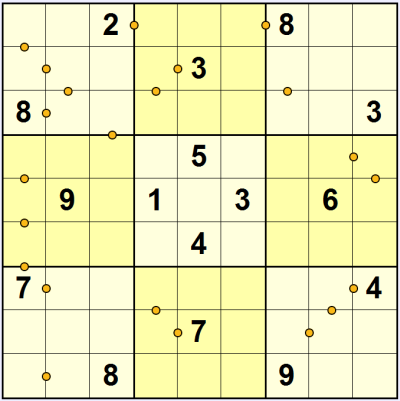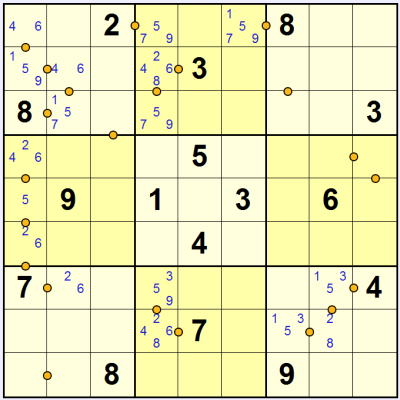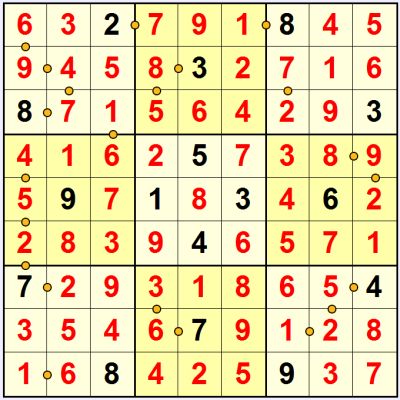Futoshiki
Calcudoku
![]()
Consecutive Sudoku
Oddpair Sudoku
Pro
Sudoku
![]()
Looking for puzzles for your book, magazine or newspaper?
|
How to play Odd Pair Sudoku
An Odd Pair Sudoku puzzle adds one extra constraint to the standard Sudoku grid - not only must you place 1 to 9 (or 1 to whatever the width of the puzzle is) in each row, column and bold-lined box, but you must also follow the orange 'Odd Pair' markers:
In the example puzzle shown here you can immediately narrow down the candidates next to some of the odd pair markers by comparing them with the pre-given numbers, as shown in the picture below. Small 'pencilmark' digits have been added to show valid values in these squares - pencilmarks are useful for helping keep track of possible solutions as you work through the puzzle. It's worth noting that, because the numbers in each odd pair sum to an odd number, it must always be the case that one number is odd and the other is even.
When this puzzle is fully-solved you will have 1 to 9 in each row, column and 3-by-3 box, and all digits with orange 'o's between them will sum to an odd number, as shown here:
Note again that there is no inverse rule, so numbers without an orange 'o' can also form odd pairs. And that's all there is to Odd Pair Sudoku. |






